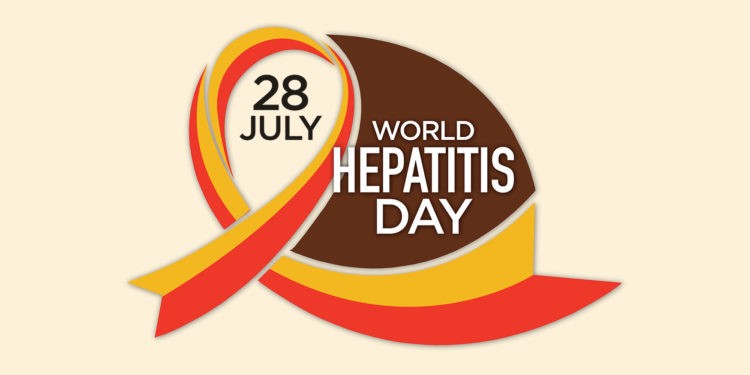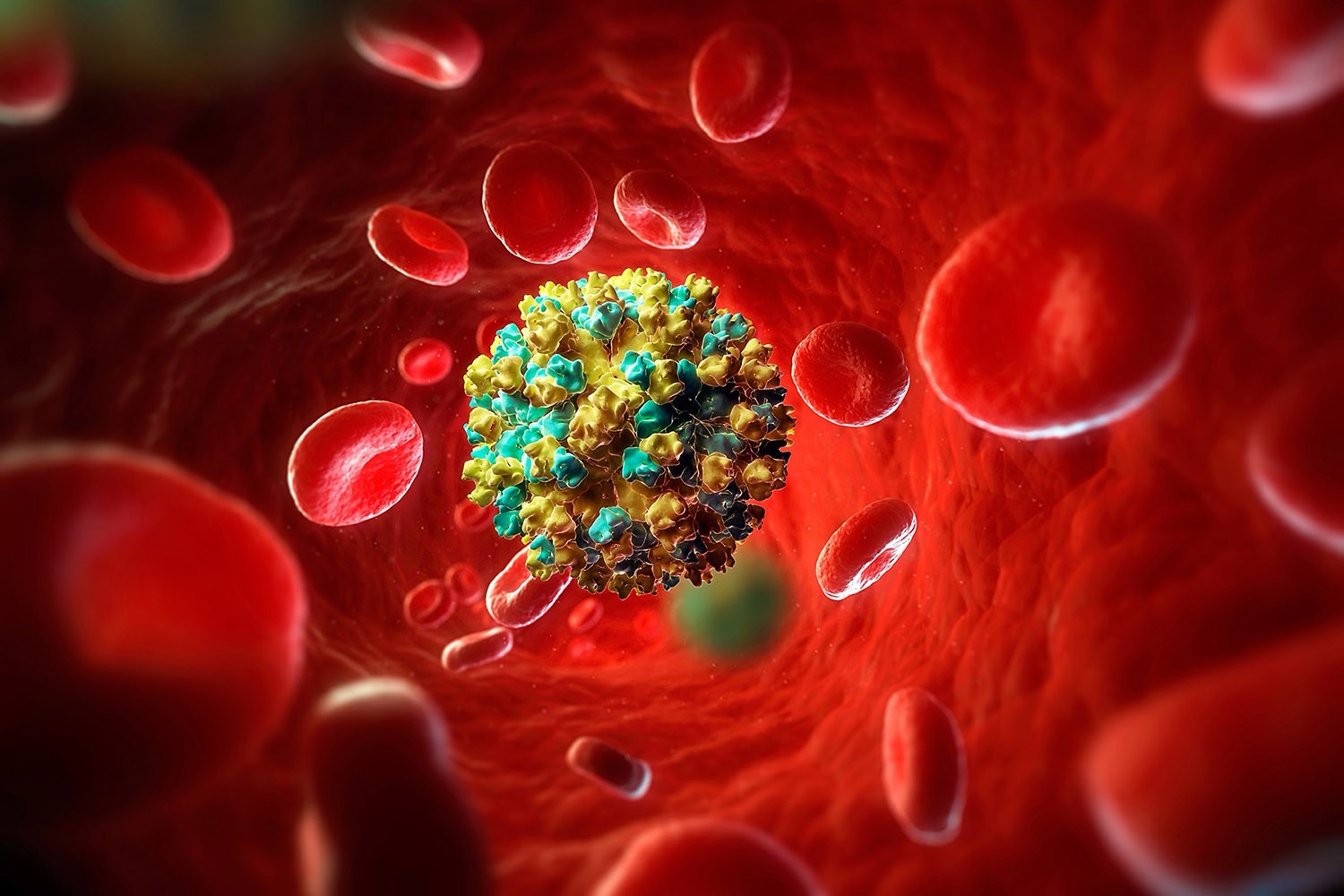World Hepatitis Day

Story by Cheri Woodsmall
At age 26, Lisa* began experiencing nausea, fatigue, and abdominal pain. “I kept wondering why I was so darned tired. Was it because I had been working at least two to three double shifts a week and had a young child? I was young, I shouldn’t have been so tired,” she recalled.
Soon she could tolerate only burnt toast, oatmeal, and water. “I diagnosed myself as having gall bladder problems and went to a surgeon to have it removed,” she said.
“I was surprised to wake up in the hospital’s isolation ward, which meant no one could come in without protective gowns and gloves. I thought, what is going on? Surgery patients aren’t isolated.” The doctor told her she had “some kind of hepatitis.”
Further tests revealed that not only did she have chronic hepatitis B, but she was also suffering liver damage from the virus. “I remember thinking, ‘Oh my God, what now? How did I get it? What about my son and husband?’” Fortunately, test results showed that neither her son nor husband was infected.
Lisa had worked as a nurse and assumed she had become infected through exposure to infectious blood or body fluids from a jaundiced patient she had cared for. She eventually returned to work, but in the months that followed, suffered relapses and frequent hospitalizations due to fatigue and abdominal pain related to hepatitis B.
Lisa’s story is just one of millions of people worldwide who have some form of hepatitis. If you have been diagnosed with one of the forms of hepatitis, you are not alone. It is thought that roughly two percent of people in the United States are living with a chronic hepatitis B or hepatitis C infection, not to mention the other three forms. Hepatitis can cause illness or death due to both the symptoms of the infection and to complications that may develop.
Worldwide, hepatitis (especially hepatitis B and hepatitis C) was responsible for 1.34 million deaths in 2015. The World Health Organization (WHO) also reports that deaths from hepatitis have increased 22 percent since 2000.
Hepatitis B and hepatitis C are responsible for 96 percent of deaths from viral hepatitis of any kind worldwide and cause an estimated 78 percent of all liver cancer and 57 percent of all liver cirrhosis.

WORLD HEPATITIS DAY IS JULY 28
World Hepatitis Day is a public health holiday held each year to raise awareness about hepatitis, a group of infectious diseases that attack the liver and affect people all over the globe. The day also promotes testing and prevention for all five types of the disease: A, B, C, D and E. The World Hepatitis Alliance established this day in 2008 but did you know it was originally held on May 19? The date moved to July 28 in 2010 after the World Health Assembly decided to commemorate the birthday of Baruch Samuel Blumberg, an American physician who discovered hepatitis B in the Sixties, eventually winning a Nobel Prize for his work on the virus and its vaccine.
Dr. Blumberg discovered the hepatitis B virus in 1967, and 2 years later he developed the first hepatitis B vaccine. These achievements culminated in Dr. Blumberg winning the Nobel Prize. Organizations around the world, including WHO and CDC, commemorate World Hepatitis Day to raise awareness of the problem of viral hepatitis, which impacts more than 325 million people worldwide. It creates an opportunity to educate people about the burden of these infections, CDC’s efforts to combat viral hepatitis around the world, and actions people can take to prevent these infections.
Viral hepatitis — a group of infectious diseases known as hepatitis A, B, C, D, and E — affects millions of people worldwide, causing both acute (short-term) and chronic (long-term) liver disease. Viral hepatitis causes more than one million deaths each year. While deaths from tuberculosis and HIV have been declining, deaths from hepatitis are increasing.

A CLOSER LOOK AT THE DIFFERENT TYPES OF HEPATITIS
The five hepatitis viruses – A, B, C, D, and E – are distinct and can spread in different ways, affect different populations, and result in different health outcomes.
Hepatitis A is a vaccine-preventable liver infection caused by the hepatitis A virus (HAV). HAV is found in the stool and blood of people who are infected. Hepatitis A is very contagious. It is spread when someone unknowingly ingests the virus — even in microscopic amounts — through close personal contact with an infected person or through eating contaminated food or drink. Symptoms of hepatitis A can last up to 2 months and include fatigue, nausea, stomach pain, and jaundice. Most people with hepatitis A do not have long-lasting illness. The best way to prevent hepatitis A is to get vaccinated.
Hepatitis B is a vaccine-preventable liver infection caused by the hepatitis B virus (HBV). Hepatitis B is spread when blood, semen, or other body fluids from a person infected with the virus enters the body of someone who is not infected. This can happen through sexual contact; sharing needles, syringes, or from mother to baby at birth. Not all people newly infected with HBV have symptoms, but for those that do, symptoms can include fatigue, poor appetite, stomach pain, nausea, and jaundice. For many people, hepatitis B is a short-term illness. For others, it can become a long-term, chronic infection that can lead to serious, even life-threatening health issues like cirrhosis or liver cancer. Risk for chronic infection is related to age at infection: about 90% of infants with hepatitis B go on to develop chronic infection, whereas only 2%–6% of people who get hepatitis B as adults become chronically infected. The best way to prevent hepatitis B is to get vaccinated.
Hepatitis C is a liver infection caused by the hepatitis C virus (HCV). Hepatitis C is spread through contact with blood from an infected person. Today, most people become infected with the hepatitis C virus by sharing needles or other equipment used to prepare and inject drugs. For some people, hepatitis C is a short-term illness, but for more than half of people who become infected with the hepatitis C virus, it becomes a long-term, chronic infection. Chronic hepatitis C can result in serious, even life-threatening health problems like cirrhosis and liver cancer. People with chronic hepatitis C can often have no symptoms and don’t feel sick. When symptoms appear, they often are a sign of advanced liver disease. There is no vaccine for hepatitis C. The best way to prevent hepatitis C is by avoiding behaviors that can spread the disease, especially injecting drugs. Getting tested for hepatitis C is important, because treatments can cure most people with hepatitis C in 8 to 12 weeks.
Hepatitis D, also known as “delta hepatitis,” is a liver infection caused by the hepatitis D virus (HDV). Hepatitis D only occurs in people who are also infected with the hepatitis B virus. Hepatitis D is spread when blood or other body fluids from a person infected with the virus enters the body of someone who is not infected. Hepatitis D can be an acute, short-term infection or become a long-term, chronic infection. Hepatitis D can cause severe symptoms and serious illness that can lead to life-long liver damage and even death. People can become infected with both hepatitis B and hepatitis D viruses at the same time (known as “coinfection”) or get hepatitis D after first being infected with the hepatitis B virus (known as “superinfection”). There is no vaccine to prevent hepatitis D. However, prevention of hepatitis B with hepatitis B vaccine also protects against future hepatitis D infection.
Hepatitis E is a liver infection caused by the hepatitis E virus (HEV). HEV is found in the stool of an infected person. It is spread when someone unknowingly ingests the virus – even in microscopic amounts. In developing countries, people most often get hepatitis E from drinking water contaminated by feces from people who are infected with the virus. In the United States and other developed countries where hepatitis E is not common, people have gotten sick with hepatitis E after eating raw or undercooked pork, venison, wild boar meat, or shellfish. In the past, most cases in developed countries involved people who have recently traveled to countries where hepatitis E is common. Symptoms of hepatitis E can include fatigue, poor appetite, stomach pain, nausea, and jaundice. However, many people with hepatitis E, especially young children, have no symptoms. Except for the rare occurrence of chronic hepatitis E in people with compromised immune systems, most people recover fully from the disease without any complications. No vaccine for hepatitis E is currently available in the United States.
THE TREATMENTS
Given the large number of people who are affected by some form of hepatitis, it is important to be familiar with the different types of the disease. For those at risk, vaccines are now available for both hepatitis A and hepatitis B, and since hepatitis D only occurs along with hepatitis B, many of these diseases are now preventable with vaccination.
DON’T WAIT – GET TESTED
Since hepatitis C is often asymptomatic during the acute phase, there are many people who carry the infection but are unaware. If you have any risk factors, ask your doctor to test you for the disease. That said, many people develop the infection without any obvious risk factors, and it is now recommended that everyone born between 1945 and 1965 be tested for the disease.
Sources: Hepb.org, CDC.gov, worldhepatitisday.org






